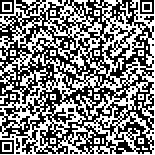附件
|
| 引用本文: | 李大命,周军,唐晟凯,李旭光,林海,张彤晴,周刚.河蟹养殖池塘微囊藻水华毒性及其光合作用活性特征.湖泊科学,2015,27(1):113-118. DOI:10.18307/2015.0114 |
| LI Daming,ZHOU Jun,TANG Shengkai,LI Xuguang,LIN Hai,ZHANG Tongqing,ZHOU Gang.Toxicity and photochemical activity of Microcystis bloom in crab cultivation pond. J. Lake Sci.2015,27(1):113-118. DOI:10.18307/2015.0114 |
|
| |
|
|
| 本文已被:浏览 8053次 下载 5155次 |

码上扫一扫! |
|
|
| 河蟹养殖池塘微囊藻水华毒性及其光合作用活性特征 |
|
李大命1,2, 周军1, 唐晟凯1, 李旭光1, 林海1, 张彤晴1, 周刚1
|
|
1.江苏省淡水水产研究所, 江苏省内陆水域渔业资源重点实验室, 南京 210017;2.中国科学院南京地理与湖泊研究所湖泊与环境国家重点实验室, 南京 210008
|
|
| 摘要: |
| 苏州市吴中区一河蟹养殖池塘在2013年7月和8月发生了严重的微囊藻水华.采用单一和双重PCR扩增微囊藻毒素合成酶基因,用以检测微囊藻水华是否产毒,结果显示为阳性.同时,采用高效液相色谱测定微囊藻水华的毒性大小.结果表明:7月和8月微囊藻水华的胞内微囊藻毒素浓度分别为1.49和0.88μg/L,胞外微囊藻毒素的浓度分别为0.75和1.09μg/L.另外,采用浮游植物荧光仪Phyto-PAM测定河蟹养殖水体形成水华的微囊藻的光合作用活性.结果显示:7月和8月水华微囊藻的最大光量子产量Fv/Fm分别为0.48和0.44,实际光量子产量ΦPSⅡ分别为0.38和0.32,表明形成水华的微囊藻有较高的生长潜力.非光化学荧光淬灭值NPQ分别为0.28和0.36.从快速光响应曲线RLC的特征参数来看,7月水华微囊藻的光合作用活性和光能利用效率高于8月.本研究结果表明,河蟹养殖池塘水体受到微囊藻水华和微囊藻毒素的污染,进而可能对河蟹食品安全构成潜在威胁. |
| 关键词: 河蟹养殖池塘 微囊藻水华 微囊藻毒素 微囊藻光合作用活性 浮游植物荧光仪 |
| DOI:10.18307/2015.0114 |
| 分类号: |
| 基金项目:江苏省青年科学基金项目(BK2012488)和国家"十二五"子课题河蟹池塘高效生态养殖技术集成与示范项目(2012BAD25B07)联合资助 |
|
| Toxicity and photochemical activity of Microcystis bloom in crab cultivation pond |
|
LI Daming1,2, ZHOU Jun1, TANG Shengkai1, LI Xuguang1, LIN Hai1, ZHANG Tongqing1, ZHOU Gang1
|
|
1.Key Laboratory of Fisheries Resources in Inland Water, Freshwater Fisheries Research Institute of Jiangsu Province, Nanjing 210017, P. R. China;2.State Key Laboratory of Lake Science and Environment, Nanjing Institute of Geography and Limnology, Chinese Academy of Sciences, Nanjing 210008, P. R. China
|
| Abstract: |
| In July and August of 2013, Microcystis bloom occurred in a crab pond which was located in Wuzhong district, the city of Suzhou. In the present study, single and double PCR amplification for microcystin synthetase gene were used to detect whether the Microcystis bloom was toxigenic or not. All PCR products from Microcystis bloom materials were positive. Meanwhile,high performance liquid chromatography technique were used to measure the microcystin concentration of Microcystis bloom, the results showed that intracellular microcystin concentration were 1.49 and 0.88μg/L in July and August, and intracellular microcystin concentration were 0.75 and 1.09μg/L, respectively. In addition, Phyto-PAM was applied to measure photochemical activity of bloom-forming Microcystis. The value of maximum quantum yield Fv/Fmwere 0.48 and 0.44 in July and August, and the effective quantum yield ΦPSⅡ were 0.38 and 0.32, respectively. These results suggested that bloom-forming Microcystis had higher potential growth, and the value of non-photochemical quenching were 0.28 and 0.36. From the view of characteristical parameters of rapid light response light curve, it demonstrated that the photochemical activity of bloom-forming Microcystis in July is higher than that in August. The experiment results from this study suggested that water in crab culture pond has suffered from Microcystis bloom and microcystin contamination may present potential threat to crab food safety. |
| Key words: Crab pond Microcystis bloom microcystin photochemical activity Phyto-PAM phytoplankton analyzer |
|
|
|
|